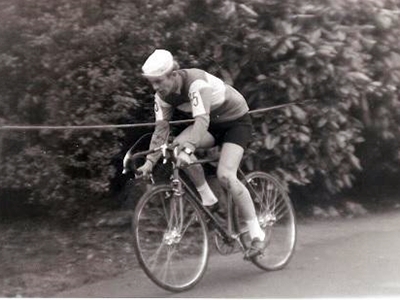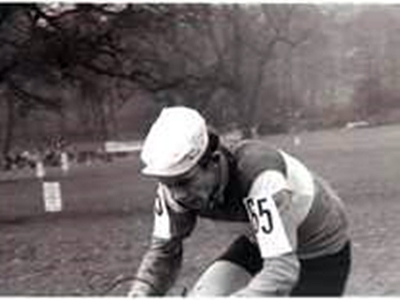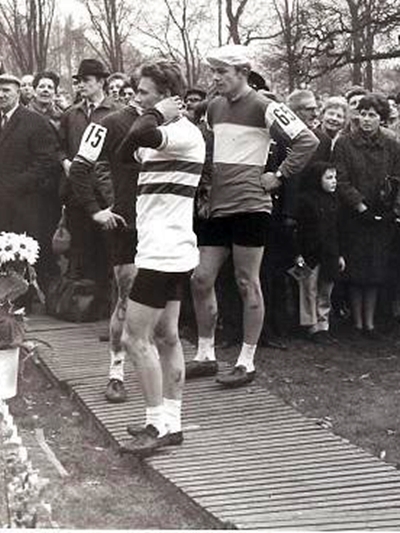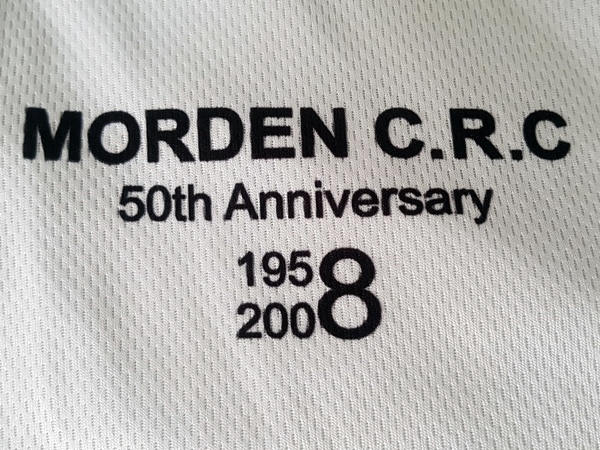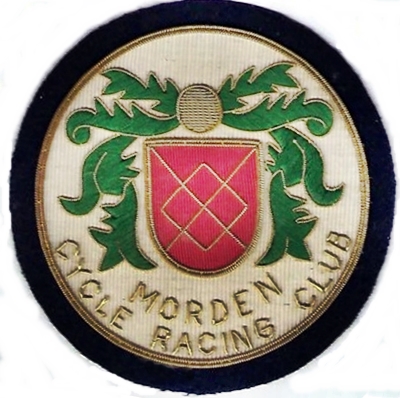
Morden Cycle Racing Club
History
MORDEN CYCLE RACING CLUB The background information to the Morden Cycle Racing Club The club was formed in 1958 as a result of several members of the Redmon CC - Redmon being an anagram of Morden, wishing to participate more in the competitive side of the sport. The club colours are orange, white and green. One of the founder members was Harry Humphreys who with frame builder H E 'Doc' Green ran H E Cycles. This business ran two bicycle shops, one in Fulham and the other at Cinema Parade, Morden which became an ad hoc meeting place for members of the Morden CRC. Over the ensuing years the club has been active in promoting various organised races including the Older Man's Memorial Road Race on the Surrey / Sussex border which was held every year for 25 years until 2011. Other members have rode at Milk Race, Olympic and World Championship levels. Members compete in time trials both at club and open level, road races, cyclo-cross and other competitive events. They also ride for their own pleasure though the dispersed nature of the membership makes it difficult to undertake club social runs. The club currently counts some thirty members over a wide age range with some having been members most of their adult life. Although small the club is a friendly one and members will always look to help each other. Other than a formal AGM which is usually held at a member's home in the area of Cheam and Morden we tend to meet up at club time trial events where informal and very popular picnic gatherings are held post race. These take place throughout the season; April to October with nine races competing on various time trial courses in the Cranleigh and Dorking areas. The club is fully affiliated to the Cycling Time Trials body (CTT) and as such comes within the CTT London South area where details of all club races are listed on their website. There are a number of trophies and medals on offer to members who compete in time trials and outside cyclo-cross events. An example is the penultimate time trial race of the season which sees members competing for the Godbold Trophy over a demanding 20 miles - 3 laps of the Hungry Hill circuit course near Ripley. Other social aspects include a Christmas lunch gathering which for many years has been held at the Prince of Wales Pub in Cheam and also an occasional club newsletter which is light hearted and informative. The club secretary also regularly keeps members informed by email regards updates by the CTT and also about matters pertaining to the club and its events. We also have a Facebook Page; 'Morden CRC' with a website currently being developed and an occasional newsletter. Memberships fees are not expensive at £5 per annum. The birth of the Morden Cycle Racing Club. The Morden CRC was formed when a number of younger cyclists from another club decided to form a club that would cater for those riders who wished to take part & shared a keen interest in the competitive side of cycle sport but at the same time wanted to actively support the racing by utilizing club funds to promote events – they just wanted companionship & wanted to race but with the minimum of administration overheads. At the time the cycling world in England was in turmoil with two factions, NCU - National Cyclists Union & BLRC - British League of Racing Cyclists supporting different agendas on cycle racing, as they fought for supremacy. The NCU was formed in 1882 & was established initially to look after the welfare of cyclists & to run/organise cycle racing. However they were committed not to run races on the open roads, only on closed circuits like Broooklands or on a cycle track (Velodrome) such as Herne Hill & Putney or on a flat grass track oval marked out at local shows. This policy was implemented as they feared opposition from the authorities. However because the designated venues for racing were a great distance from those riders that wanted to race, another group formed (to be called the Road Time Trial Council - RTTC) which wanted to use the open roads to compete. So as to alleviate any conflict with the authorities they established time trialling. This was riders setting off at one minute intervals, riding solo against the clock, over a set distance or time, on predetermined courses. However again to stop the authorities interfering with these events, the events were held in the early morning, on courses in the countryside. The events were not publicised nor the location named, but only defined by a ‘course code number’. The riders where dressed in black, they carried no competitor or race numbers & they were not allowed to slip stream each other. The authorities let this form of the sport evolve with little hinderance. The NCU authorised & licensed riders to send to Olympics, World Championships & to compete abroad. In Europe road racing, ‘massed start racing’, was allowed & encouraged on the open roads. Our riders were thus at a disadvantage when they competed abroad as they could not compete or learn the tactics of this form of cycle racing over a varied terrain on open roads as it was not practiced in England. Then in 1941 Percy Stallard, an established road rider tried to get the NCU to allow/instigate massed start/road racing, as in Europe, on our English roads. However the NCU refused to pursue this side of the sport as they were worried that it would alienate the authorities & they would lose the ‘blind eye/freedom’ taken by them towards time trialling on the open roads. This failed to stop Stalllard. In 1942 Stallard wrote a letter stating that he was going to run a road race on 7th June over 59 miles from Llangollen to Wolverhampton & managed to justify to the police that this was the norm in Europe & did not cause any problems for them. The police surprisingly approved the event & supplied man-power & vehicles to marshal the race. On the day 34 riders battled out the race & in excess of 1,000 spectators watched the finish in West Park where A E Price - Wolverhampton won the race. As a result of this, lots of cycling clubs joined the BLRC & in turn promoted massed start events on the open road run under the BLRC rules & the support & the number of events just grew. Despite this break through neither the NCU nor the RTTC would progress the future of massed start racing on the open roads & to enforce this stance, clubs, riders & helpers that were actively a part of BLRC events were banned from competing in their events. The war had commenced between the cycling factions. Despite the Union Cycliste Internationale - UCI, the World Cycling governing body, initially recognising the NCU as the authorising body for UK cycling they tired of their stance on road racing in the UK, especially when the BLRC were able to race successfully in other non UCI events abroad like the Peace Race, the Warsaw-Berlin- Prague stage race. When in 1952 the British rider Ian Steel won the event overall & the British team that supported him won the team race, the UCI recognised that the BLRC existed as a road racing body in the UK but they had to accept that the NCU was the accepted UK body for cycling. In 1955, the NCU was asked by the UCI to send a team to the Tour de France but the NCU could not pick a team to honour the standard of riders required from their own ranks, as they had banned BLRC members from their activities. Conversely the BLRC could field a very strong team but were not allowed to send it because the UCI did not officially recognise it. As the NCU did not want to refuse the invitation, send an inferior team or give in to the BLRC, the impasse was solved by asking a panel of newspaper journalists to select the team members. It was now that the NCU started to accept the BLRC existence & its power in running & competing in road races. Discussions started to try to quell the war & find harmony in a single organisation to run cycle sport in Britain. However some factions in the BLRC wanted their side to be the overall victor, instead of a truce & acceptance of a unified body. In 1959 the two bodies managed to merge to become the British Cycling Federation -BCF but the friction still remained for years to come. The RTTC however remained a separate body solely for the sport of time trialling. So when the Morden Cycle Racing Club formed in October 1958 a new ‘peaceful & unified era’ was dawning & they wanted to embrace this situation instead of still dragging their heals in the past. The Club affiliated to the BCF & the RTTC. Club members took out BCF racing licences so that they could compete in road races & track races but a licence was not required to ride RTTC time trial events.
|
Site designed and maintained by robin-web.co.uk
